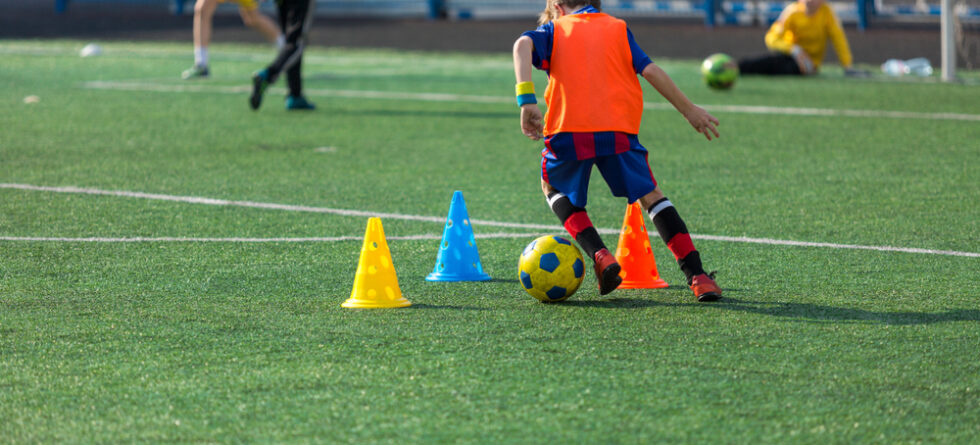Conditioning a child for soccer involves a combination of physical training, skill development, and mental preparation.
Here are some tips to help condition a child for soccer…
- Focus on Fundamentals – Start with basic soccer skills such as dribbling, passing, shooting, and ball control. Ensure the child has a solid foundation in these fundamental skills before progressing to more advanced techniques.
- Build Endurance – Soccer requires stamina and endurance. Incorporate activities such as jogging, running drills, and small-sided games to improve cardiovascular fitness and endurance levels.
- Strength Training – Implement age-appropriate strength training exercises to develop muscle strength, particularly in the lower body, core, and upper body. Exercises like squats, lunges, planks, and push-ups can help improve overall strength and stability.
- Flexibility and Mobility – Encourage stretching exercises to improve flexibility and mobility, which are essential for injury prevention and agility on the field. Incorporate dynamic stretches and mobility drills into warm-up routines.
- Speed and Agility – Incorporate drills and exercises that focus on speed, agility, and quickness. Cone drills, ladder drills, and shuttle runs can help improve footwork, coordination, and reaction time.
- Practice Game Situations – Set up game-like scenarios during practice sessions to help the child understand tactical concepts such as positioning, spacing, teamwork, and decision-making. Encourage problem-solving and critical thinking in the field.
- Rest and Recovery – Allow adequate rest and recovery time between training sessions to prevent overuse injuries and promote physical and mental well-being. Encourage healthy sleep habits and proper nutrition to support growth and development.
- Positive Reinforcement – Provide positive reinforcement and encouragement to boost the child’s confidence and motivation. Focus on effort, improvement, and enjoyment of the game rather than solely on outcomes or results.
- Fun and Enjoyment – Make soccer training enjoyable and fun for the child. Incorporate games, challenges, and activities that keep them engaged and excited about learning and improving their skills.
- Safety First – Prioritize safety at all times. Ensure the child wears appropriate protective gear, including shin guards, and teach them proper techniques to reduce the risk of injuries.
Overall, conditioning a child for soccer requires a well-rounded approach that addresses the physical, technical, tactical, and psychological aspects of the game. By providing structured training, positive reinforcement, and a supportive environment, parents and coaches can help children develop the skills, fitness, and mindset needed to succeed in soccer while fostering a lifelong love for the sport.




